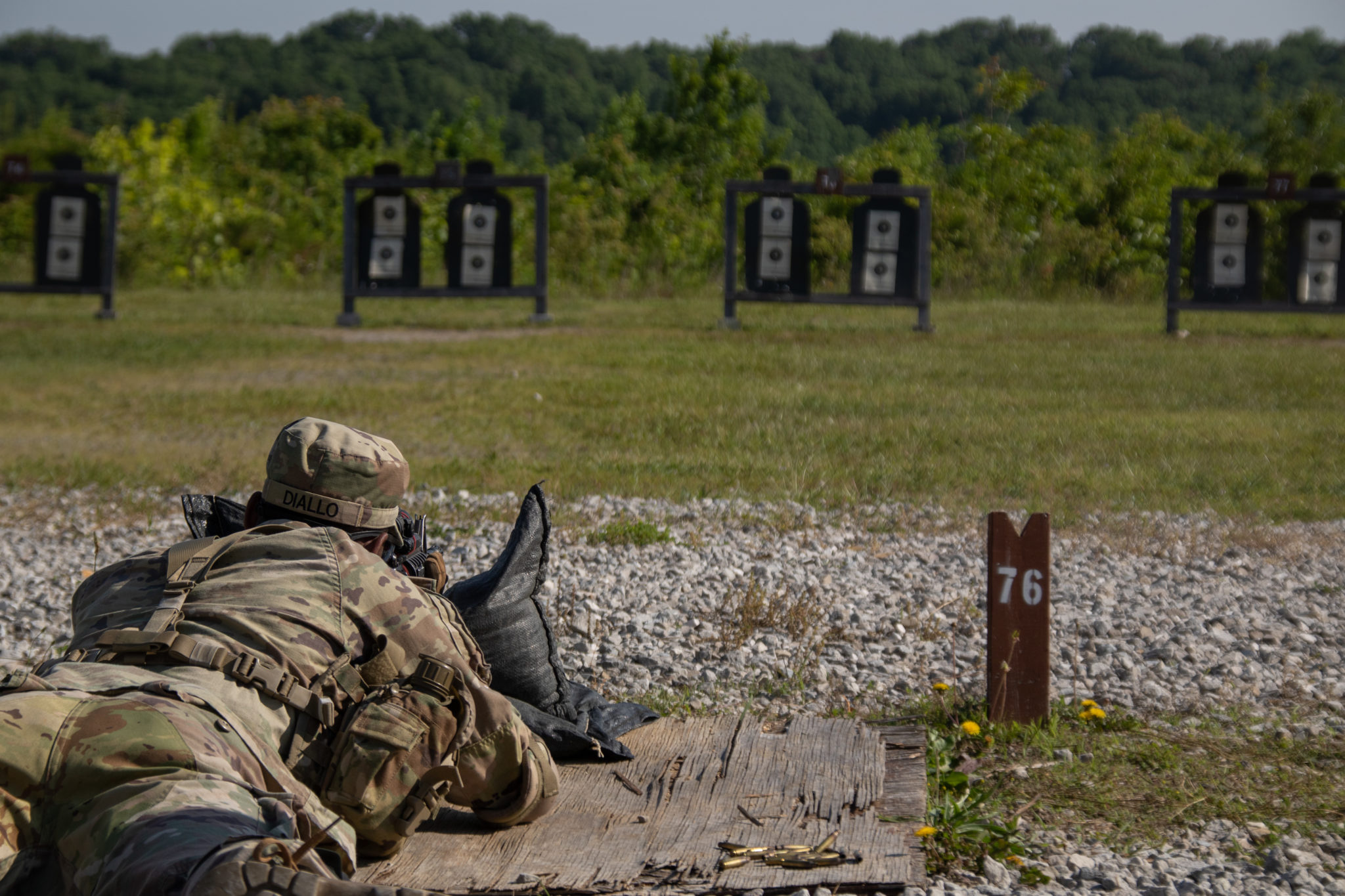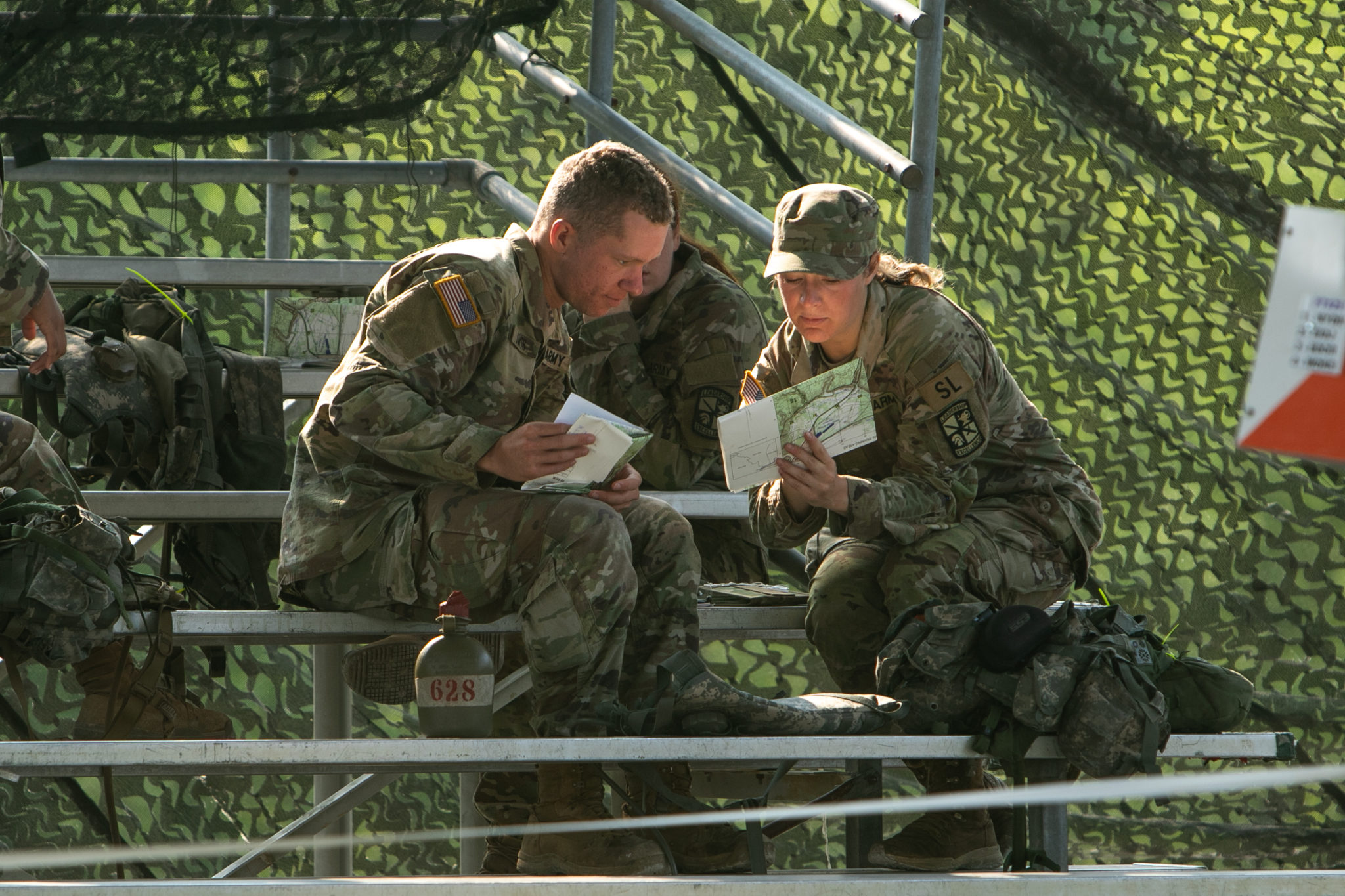FORT KNOX, Ky. — Early this morning, drill instructors introduced Army Physical Readiness Training (PRT) to the Cadets in 2nd Regiment, Basic Camp.
Physical Readiness “is the ability to meet the physical demands of any combat or duty position, accomplish the mission, and continue to fight and win,” according to the Army Public Health Center’s website. Intro PRT familiarizes new Cadets with exercise techniques, which build the strength, endurance, and mobility needed for combat.
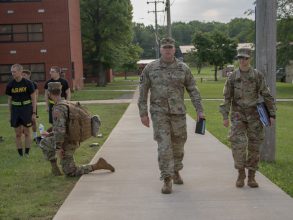
Lt. Col. Matthew Stanley (middle) monitors the training June 14, 2018 at Fort Knox, KY.
“The PRT that the Army has adopted has a good set of drills, stretches and routines that properly prepare the Cadets and Soldiers,” Lt. Col. Matthew Stanley, Professor of Military Science at Eastern Michigan University, said. “I definitely think the Army has made huge strides as they’ve updated and changed their PRT program.”
According to this article from the U.S. Army’s website, the new PRT is a standardized, “Army-wide structure designed to train up Soldiers for the myriad physical skills needed for today’s fight – sprinting short distances and stopping quickly, jumping, climbing, and lifting heavy objects or wounded Soldiers, for example.”
The Cadets go through the full range of motion, working many different muscle groups to prepare them for physical exertion during the day.
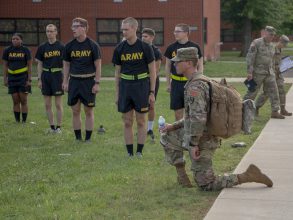
Pvt. Jacob Secord watches for potential injuries during Physical Readiness Training (PRT) June 14, 2018 at Fort Knox, KY.
Additionally, “it’s pretty effective in limiting injuries,” added Pvt. Jacob Secord from the 586 Field Support Hospital, Fort Campbell, Ky. As one of the medics, Secord keeps watch on the Cadets’ condition to quickly catch injury, but his main focus is the weather.
“Largely, the biggest concern here at Fort Knox for Basic Camp is the heat,” Stanley continued. “We don’t see very many musculoskeletal type injuries that you would see from overuse, not properly warming up, or not properly stretching.”
However, the circuit is still challenging. Cadets worked hard, and drill sergeants corrected mistakes. Those who put forth effort were noticed.
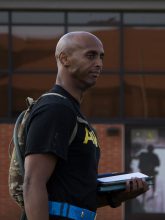
2nd Lt. Zamas Ardargachew scans his platoon during Physical Readiness Training (PRT) June 14, 2018 at Fort Knox, KY.
“I’m looking for traits that we want in leadership positions,” explained 2nd Lt. Zemas Ardargachew from the University of Alabama. Today, he’s looking for Cadets who make an effort to know the exercises and do them right. “Because it’s the first day, there’s obviously going to be a lot of rough patches.”
With blue cards, a paper evaluation form Cadre use to rate Cadets on certain criteria, Ardargachew will make notes on each Cadet, let them know what they excel at, and inform them on what they need to improve and how to go about it.
Working through today’s rough patches to make tomorrow’s effort better is what PT is all about.

